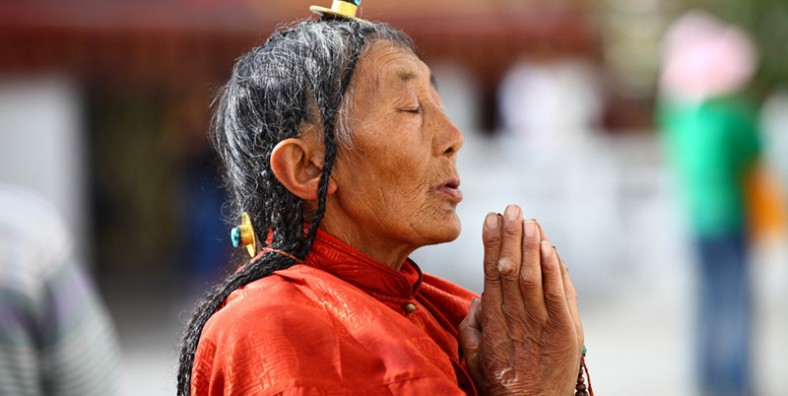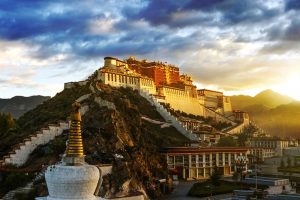
1 Day Lhasa City Highlights Tour

Tour Overview
Lhasa, which means “Land of the Gods” and is over 1,300 years old, sits in a valley right next to the Lhasa River. In the eastern part of the...
Code of Tour: YCT0000004574
Length of Travel: 1 Day
Destinations of Tour: Lhasa
Departure City: Lhasa
Price of Tour: Request
Type of Tour:
Features of Tour: Culture Minority
Lhasa, which means “Land of the Gods” and is over 1,300 years old, sits in a valley right next to the Lhasa River. In the eastern part of the city, near the Jokhang Temple and Barkhor neighborhood, Tibetan influence is still strong and evident and it is common to see traditionally dressed Tibetans engaged on a kora , often spinning prayer wheels. For this One day Lhasa City tour, you can visit one of the most famous monasteries in Lhasa-Sera Monastery, the most famous palace-Potala Palace.
Detailed Itinerary
Day 1 Lhasa
Sightseeing and Activities:Potala Palace, Norbulingka Park and Sera Monastery
Accommodation:none
Meals:lunch

In the morning, the overwhelming Potala Palace is your first stop. As the symbol of Tibet, it was built in 641 AD and was the winter palace of Dalai Lama who is Tibet’s pope. Impressive Tibetan architecture, huge golden Buddha statues, red-robed lamas and devoted pilgrims all make it a must-visit.
After lunch, you are driven to visit the Norbulingka Park, the former summer palace of Dalai Lama, and then come to Sera Monastery, once the largest Monastery housing 10,000 monks in its heyday.
Escort you to your hotel or drop you off at airport/train station. If you stay in Lhasa at night. You also can enjoy the nightlife of Lhasa. The most famous night market in Lhasa, is Tianhai Night Market on the west suburb of city. Visitors from home and abroad are enchanted by the many stalls of snacks, fruits, and handicrafts lining the street. Each night, the street is crowded and illuminated. Tianhai Night Market is known for its great variety of goods and for being cheaper than the market on the Barkhor Street.
Barkhor Street in Lhasa
Service Included:
– Entrance fees as listed in the program;
– Skilled driver & Experienced English-speaking guide;
Service Excluded:
– Train Tickets/International Flight Tickets;
– Domestic Flights (Flights tickets from Kunming to Dali,departure from Shangri-la )
– Meals not mentioned;
-Accommodation;
– Personal Travel Accident Insurance;
– Any optional programs/activities;
– Chinese visa fees;
– Personal Consumption;
– Tips (150CNY/day to Guide; 100CNY/day to Driver)
Travel Tips:
What to Pack
Truly it is not a good idea to take a super large backpack to Tibet unless you try to get more remote areas. Even you forget to bring something, you can find lots of items available in Lhasa. And whatever you want to bring, just remember the principle: packing the minimum, thus you can enjoy entirely your trip without extra burden.
Usually wearing several layers of clothing that can be added and taken off is very suitable to adapt to various changes of Tibet weather.
It is necessary to bring waterproof clothing and raingears since frequent rainfalls happen during the peak tourism season of Tibet.
A down coat and raincoat is must for traveling to remote areas and in case the temperature varies extremely within a single day.
Beisdes, you should pack include four or five pairs of cotton or woolen underwear, four or five pairs of woolen socks, long sleeve cotton or lightweight wool shirts and T-shirts. Women should avoid skirts or dresses.
Also you are highly suggested to wear casual shoes, such as walking shoes, hiking boots or comfortable sneakers.
Food and Drink:
Snacks can ensure your energy, like chocolate, squeeze biscuits, etc;
Drinking water is a necessity when traveling further.
A belt bag to pack enough amount of cash with you is very necessary, since there are few ATMs in remote areas of Tibet, besides, it can be carried at all times with important documents and cards by you;
Cellphone, camera, etc with extra batteries;
Tibet Maps and other useful Tibet guiding papers;
Flashlight, lighter, pocket knife, sewing kit;
A first aid kit, including Aspirin, Antibiotics, AMS medications and other medicines;
It would be better if you bring some small stationeries, such as pencils, notebooks, to Tibetan children as gifts for friendly communication with local people.
Money
In Tibet, Renminbi (RMB or CNY) is legal currency, since there are few banking services (e.g. ATMs) in remote area of Tibet, you are strongly recommended to take sufficient amount of money.
Only the Bank of China offers foreign exchange services and facilities in Tibet and several large hotels.
In Lhasa: the main office of the Bank of China (0891-6835078) sits on Lingkhor Bei Lu 28, north of the Yak Statue, and its hours of operation are 9:30 am -1pm and 3:30 – 6:00pm, Monday to Friday. Also you will find several sub-branches in other places, while only the main office offers cash advances on major credit cards (MasterCard, Visa, Diners Club and Amex).
In Shigatse: the Bank of China Shigatse office is near the Shigatse Hotel, can provide travelers’ checks exchange services, while cash advances on credit cards are not available here.
Please kindly note that, there is a lack of conversion outlets in Tibet, visitors shall have to change their extra RMB before entering Tibet.

















